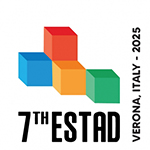Speaker
Description
Blast furnace is a process that reduces iron ore to obtain pig iron. Due to its high efficiency, it has been adopted as a major facility. As a result, not only have various technologies been developed and researched, but evaluation methods have also been established to optimize the raw materials used for efficient plant operation. Utilizing these evaluation methods, raw material management standards optimized for the facility characteristics have been established. However, the blast furnace emits excessive greenhouse gases.
As global regulations on greenhouse gas emissions become increasingly stringent, the need to reduce emissions in various industries is growing. In the steel industry, direct reduction plants are being focused for carbon neutrality. As they emit fewer greenhouse gases compared to the blast furnace and can be more easily transitioned to hydrogen‐based steelmaking. Representative DRI production facilities include MIDREX and ENERGIRON, and global steel companies are currently planning to introduce these systems.
Since these DRI production facilities cannot undergo additional reduction processes after the reduction zone, raw materials must be selected that can secure the target reduction ratio in the furnace. In shaft furnaces, the process involves reducing pellets using high‐temperature reducing gas, necessitating the establishment of operational standards that reflect the influence of gas composition and temperature in the reduction zone. Therefore, this study aims to assess the validity of the current MIDREX pellet reducibility evaluation standard, improve it, and determine management ranges for stable operation using a new reducibility evaluation method.
In this study, equipment was configured to simulate the main reduction zone within the shaft, and temperature, reducing gas flow rate, gas composition, and reaction time were set to evaluate pellet reducibility. Additionally, a DRI reducibility management standard was established to ensure the molten quality of DRI. We derived the usage priority groups for the pellets.
